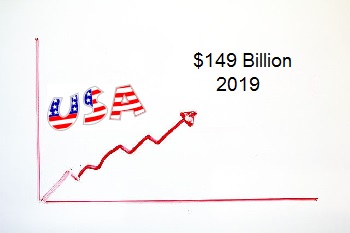Upon the initial launch of the wearable technology, three locations opened in the US, but they may closing down.
Back when the first limited release of Google Glass occurred, the company opened up what it called “Basecamps” in three cities in the United States, which were New York City, Los Angeles, and San Francisco.
These were, in essence, popup stores that gave Explorers a place to gather and discover the devices.
The Google Glass Basecamps provided a location in which the first users of these devices (nicknamed “Explorers”) could meet, learn more about what they can do with this wearable technology, and obtain other forms of tech support. It also provided Google with the opportunity to create a direct interaction with the users of these mobile devices. These unique store locations were considered to be an important part of the future of the technology.
A recent Phandroid report has stated that Google Glass may no longer have any Basecamps at all.
 The post from Phandroid stated that the locations where the Basecamps had previously existed have now been shut down. This comes at a time in which a growing number of reports are beginning to draw attention to the decreasing interest that these wearables seem to be maintaining. While the storefronts were meant to be a central hub for the people who had forked over the hefty $1,500 to become Explorers and become a virtual guinea pig for this new tech, it doesn’t look as though they will be playing much of a role anymore.
The post from Phandroid stated that the locations where the Basecamps had previously existed have now been shut down. This comes at a time in which a growing number of reports are beginning to draw attention to the decreasing interest that these wearables seem to be maintaining. While the storefronts were meant to be a central hub for the people who had forked over the hefty $1,500 to become Explorers and become a virtual guinea pig for this new tech, it doesn’t look as though they will be playing much of a role anymore.
That said, at the time of the writing of this article, Google had yet to release a comment with regards to the shuttering of the physical store locations for their augmented reality glasses. Some have speculated that the stores are simply being relocated. No official information is available, as of yet, with regards to the closers.
While it doesn’t necessarily mean that this is the beginning of the end for Google Glass, many are commenting about the timing of this move. Google has recently stated that it is committed to the tech as well as to make sure that it is offered to consumers at a more affordable price. As of yet, it is too early to know whether or not this will actually happen or what form it will take.
Report highlights the aggressive growth of mobile commerce in the United States
A new report from Forrester Research predicts that mobile payments volume in the United States will reach $149 billion in 2019, up from the $50 billion in payments volume currently. Mobile commerce is still a relatively new concept, only rising to prominence over the past few years. In a relatively short amount of time, consumers have become enthralled with the idea that they can make payments for products online and at physical stores with little more than their smarthphones and the demand for mobile-centric services is rising quickly.
Mobile payment services may become mainstream within the next five years
Several companies have been working to offer consumers mobile commerce services that are both convenient and secure, but none have yet been able to build a platform that has seen mainstream acceptance. Consumers seem to prefer using a wide variety of platforms and services, switching from one to the next as they see fit. Within the next five years, however, the report predicts that this will change and some platforms will become favored among consumers, while others may fade into obsolescence.
Retailers are feeling pressure to engage mobile consumers more effectively
 People are becoming more reliant on their mobile devices. As such, they are looking for services that can offer them more than the ability to pay for products online. The demand for physical, in-store mobile payments is growing quickly and retailers are feeling pressure to address this demand and engage mobile consumers. Some retailers are building their own mobile commerce platforms, while others reach out to companies like Apple and Google in order to connect with mobile consumers.
People are becoming more reliant on their mobile devices. As such, they are looking for services that can offer them more than the ability to pay for products online. The demand for physical, in-store mobile payments is growing quickly and retailers are feeling pressure to address this demand and engage mobile consumers. Some retailers are building their own mobile commerce platforms, while others reach out to companies like Apple and Google in order to connect with mobile consumers.
In-store mobile transaction volume may reach $34 billion by 2019
The report predicts that Apple Pay will help accelerate growth in physical mobile payments. According to the report, in-store mobile transaction volume will reach $34 billion in the U.S. by 2019. Services like Apple Pay will play a considerable role in powering this growth. As retailers see more success with in-store mobile payments, they may choose to become more aggressive in the mobile commerce field.
 The post from Phandroid stated that the locations where the Basecamps had previously existed have now been shut down. This comes at a time in which a growing number of reports are beginning to draw attention to the decreasing interest that these wearables seem to be maintaining. While the storefronts were meant to be a central hub for the people who had forked over the hefty $1,500 to become Explorers and become a virtual guinea pig for this new tech, it doesn’t look as though they will be playing much of a role anymore.
The post from Phandroid stated that the locations where the Basecamps had previously existed have now been shut down. This comes at a time in which a growing number of reports are beginning to draw attention to the decreasing interest that these wearables seem to be maintaining. While the storefronts were meant to be a central hub for the people who had forked over the hefty $1,500 to become Explorers and become a virtual guinea pig for this new tech, it doesn’t look as though they will be playing much of a role anymore.
 People are becoming more reliant on their mobile devices. As such, they are looking for services that can offer them more than the ability to pay for products online. The demand for physical, in-store
People are becoming more reliant on their mobile devices. As such, they are looking for services that can offer them more than the ability to pay for products online. The demand for physical, in-store 